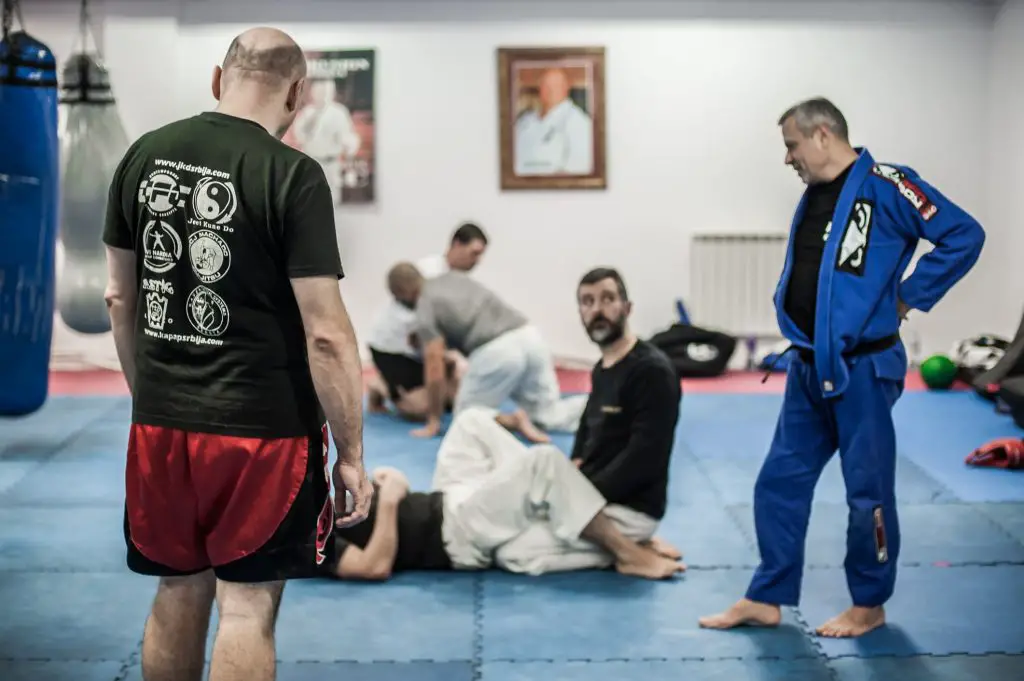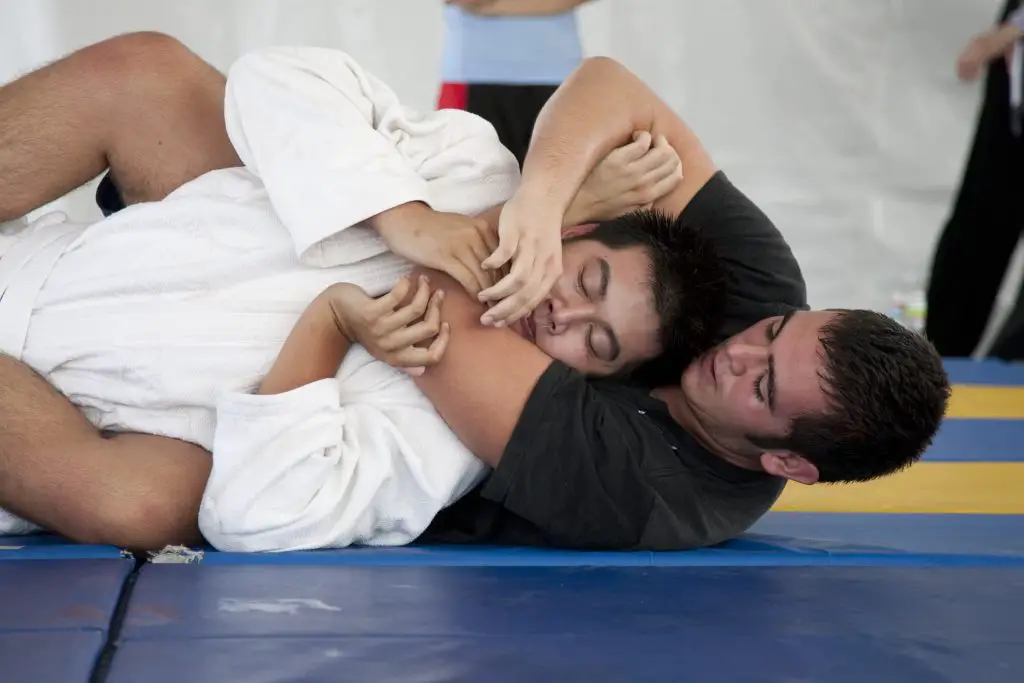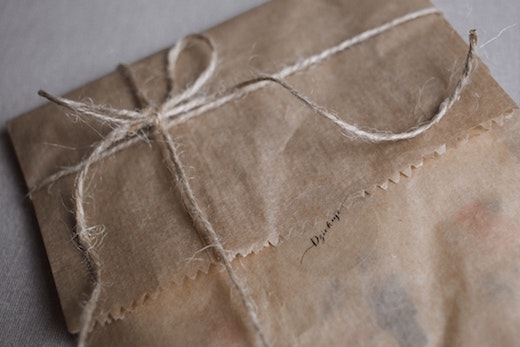- Karate weapons originated from farming tools and have become an integral part of the martial art.
- Proficiency in fundamental and advanced weapons helps develop a well-rounded martial arts skillset.
- Proper care and knowledge of Karate weapons are essential for safe and effective practice.
Karate is known as the martial art of “empty hand,” but Karate weapons play a vital role in its practice.
Karate weapons originated from farming tools and were developed due to historical influences on Okinawan society.
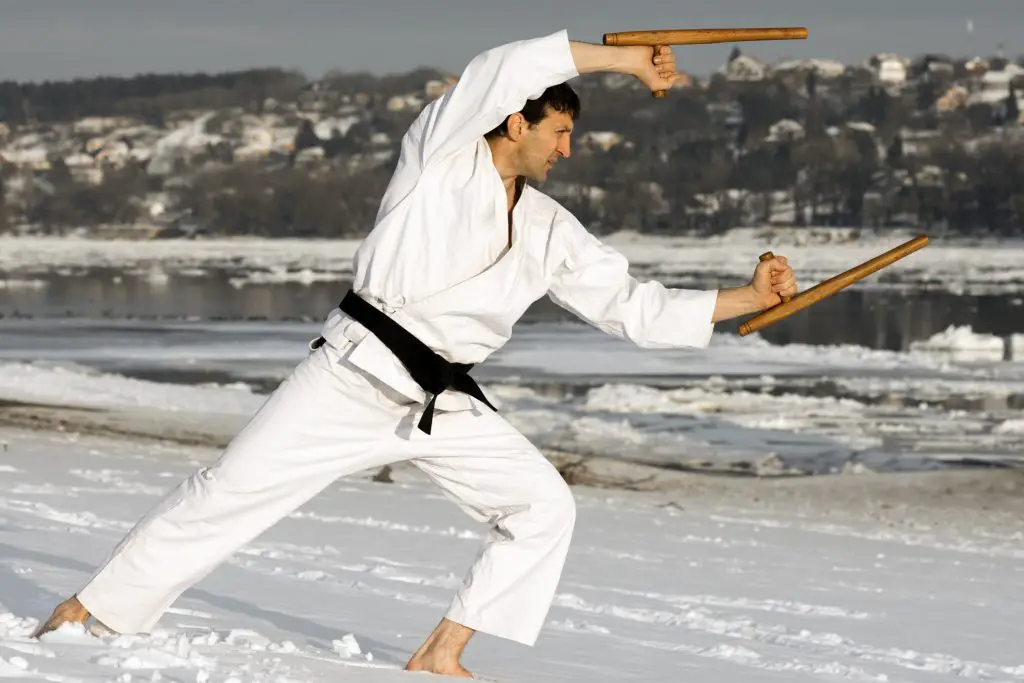
Understanding various karate weapons can enhance your martial arts training and expand your arsenal.
From fundamental to advanced weaponry, mastering these tools can enhance your skills and elevate your rank in martial arts.
The Origin of Karate Weapons
Okinawa and the Ryukyu Kingdom
The story of karate weapons starts in Okinawa, the largest island of the Ryukyu Kingdom. This region, known for its scarce metal resources, witnessed the development of unique wooden weapons during the 17th century.

Okinawa’s people were pushed to innovate with their tools due to their limited access to metal.
Influence from China and Feudal Japan
Karate evolved over centuries in East Asia, mainly influenced by China. It became systematized in Okinawa in the 17th century, where people were forbidden to carry weapons.

By the 1920s, Karate found its way to Japan, where different schools and styles formed.
From Agricultural Tools to Weapons
Many Karate weapons originated from agricultural tools that were adapted for self-defense.
These weapons were used in the complementary martial art of Kobudo, inspired by Karate but focused on weapon training.
Through innovation and necessity, Okinawans transformed their everyday tools into powerful instruments of self-defense.
Understanding Fundamental Karate Weapons
Karate is more than just hand-to-hand combat; it also involves mastering traditional weapons. This section explores five fundamental karate weapons and their significance in self-defense and Kobudo.
Importance of Bo
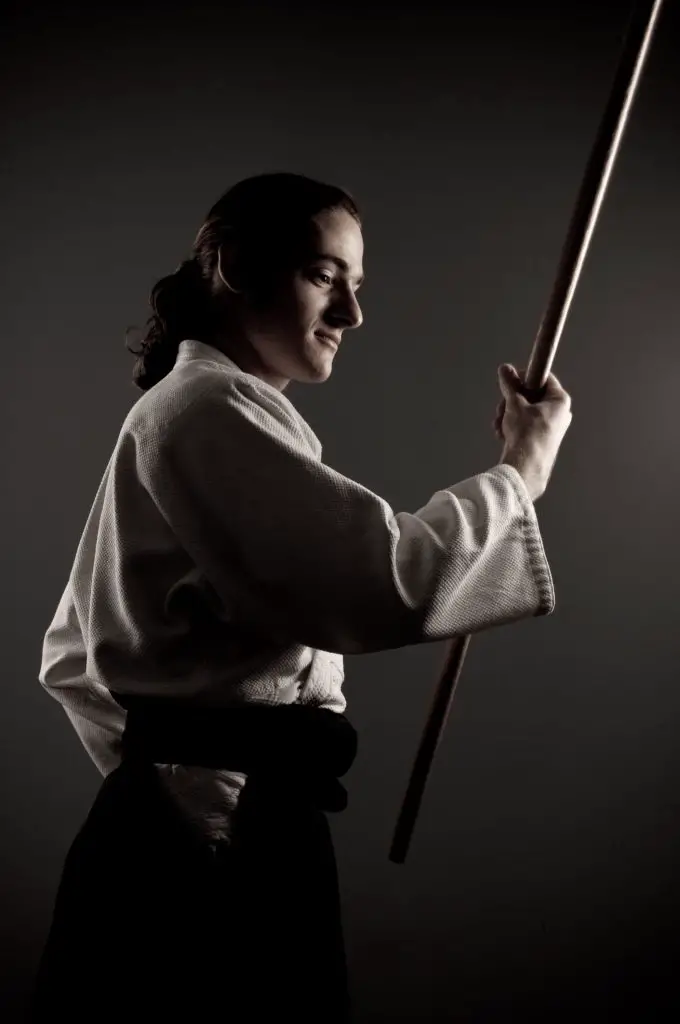
The Bo is a long wooden staff, often used in defense. With proper technique, you can maximize its reach and control.
Utilizing the Bo staff provides an extended strike range, making it a versatile self-defense weapon. Embracing this weapon allows you to incapacitate opponents while minimizing personal risk.
Role of Sai
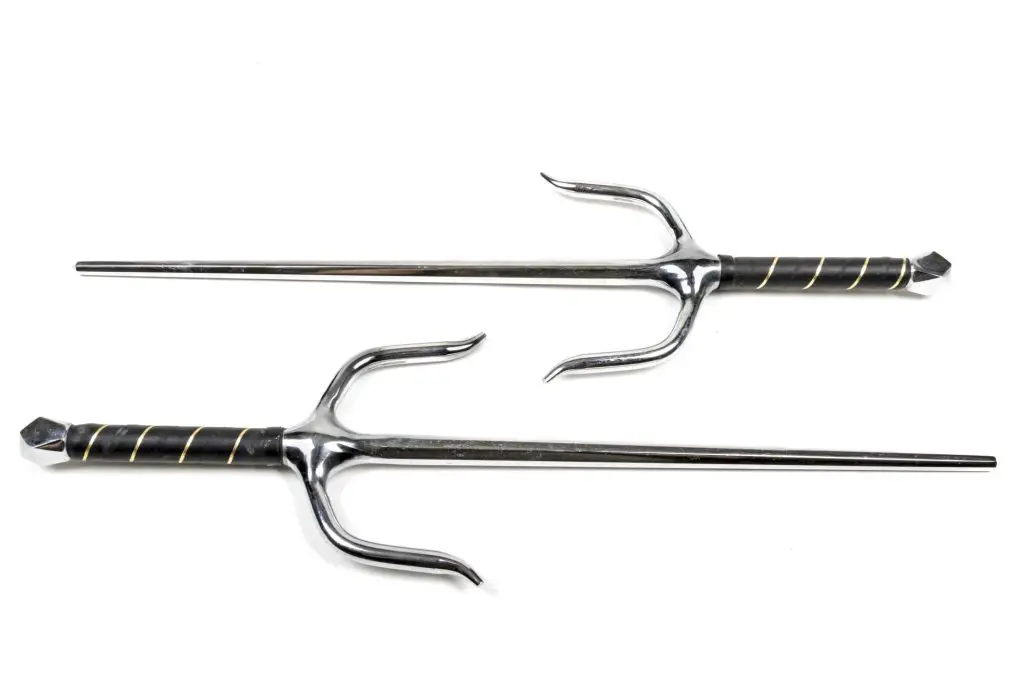
Sai is a unique three-pronged weapon primarily used for trapping and neutralizing other weapons. Its design makes it versatile for both offense and defense.
The Sai‘s unique features allow you to enhance your combat skills, strategically trapping an opponent’s weapon or unleashing powerful, targeted strikes.
Utility of Nunchaku
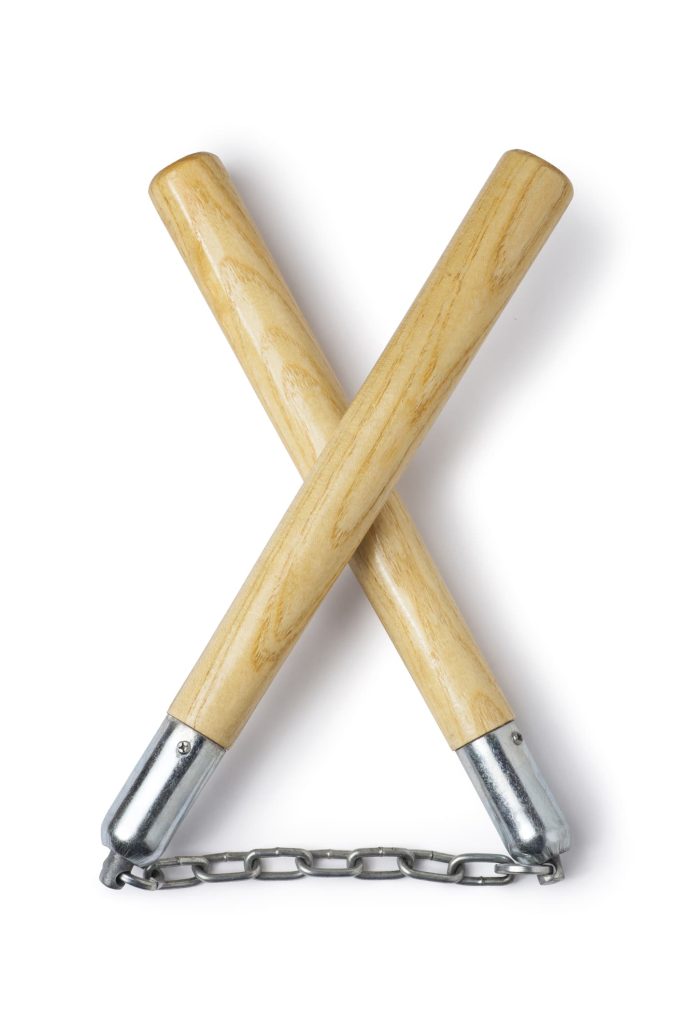
Nunchaku, consisting of two sticks connected by chain or rope, is a classic karate weapon. Its compact size and dynamic movement make it ideal for surprise attacks and quick self-defense maneuvers.
With practice, you can maximize the speed and fluidity of your strikes, overwhelming your opponents with its versatile power.
Power of Tonfa

Tonfa is a wooden weapon with a perpendicular handle, transforming a simple stick into a versatile striking and blocking tool. It is commonly used in pairs, enhancing your ability to defend against multiple attacks and use powerful counterstrikes.
By incorporating Tonfa into your training, you’ll develop comprehensive self-defense skills, discovering new ways to adapt and achieve victory in combat situations.
Flexibility of Kama
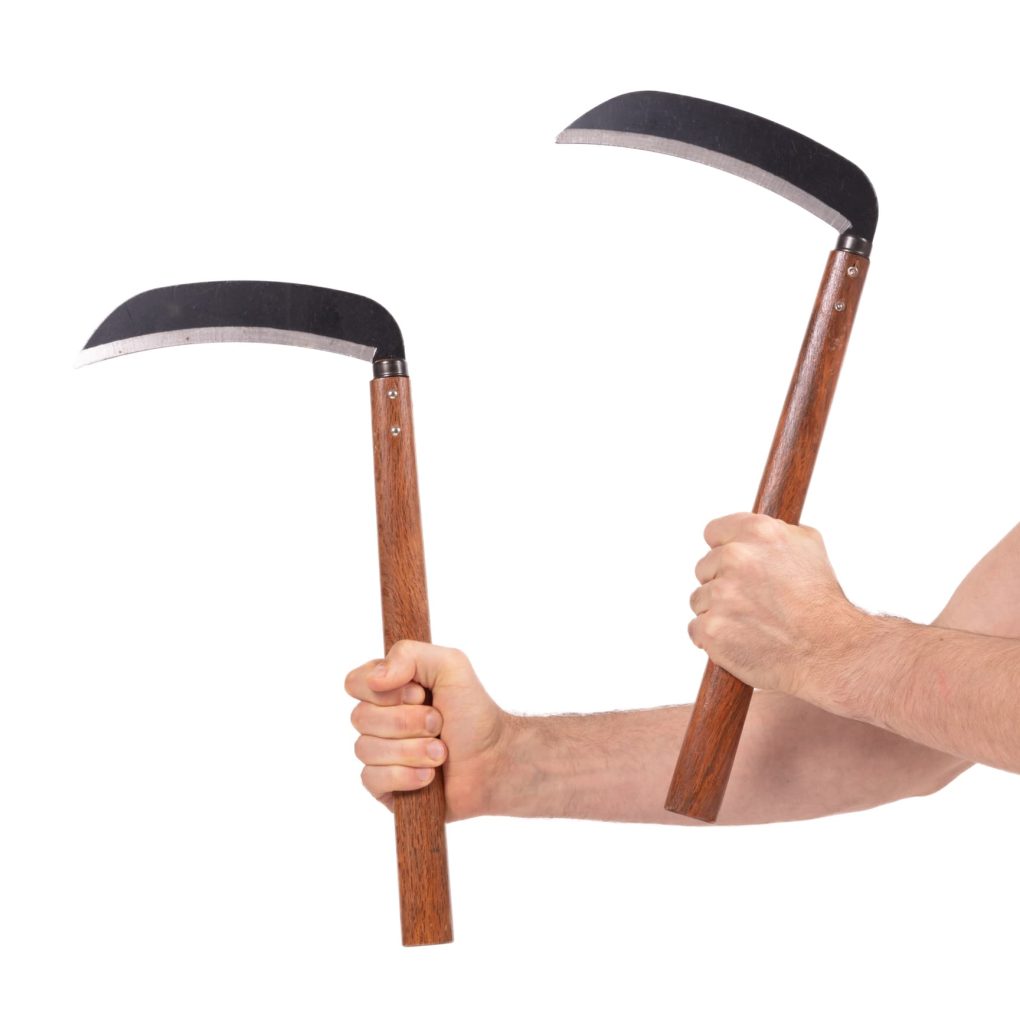
Lastly, the Kama is a symbol of adaptability in karate weaponry. Its curved, scythe-like blade serves as a powerful strike weapon. However, its greatest strength lies in its flexibility, allowing practitioners to transition from offensive to defensive positions without losing momentum.
Training with Kama challenges you to become a more versatile and agile fighter, prepared for any situation.
Advanced Karate Weapons
Ready to challenge your martial arts skills? Delve into the world of advanced Karate weapons. This section’ll explore Tekko, Eku, Surujin, and Kuwa.
Tekko and Their Usage
Tekko is a traditional Okinawan metal knuckle used in Kobudo. These close-combat weapons pack a powerful punch. To master Tekko, focus on precision strikes and solid blocks. Remember, practice makes perfect!
Versatility of Eku
The Eku is a versatile Okinawan weapon, often mistakenly thought to be just a boat oar. Did you know? It can effectively slash and block opponents. To fully command your Eku, learn to utilize its unique angles and edges for multiple attack options. Keep pushing YOUR limits.
The Deadly Surujin
Remember the Surujin, a deceptively simple-looking chain whip. This DEADLY weapon has a weighted end that can deliver a powerful strike. With the right training, your Surujin can become an extension of your body. Stay diligent and be prepared to strike at any moment.
The Unique Kuwa
Have you ever considered the Kuwa?
An Okinawan farming tool turned weapon, it’s an excellent tool for close-range attacks. Learn to harness the power of Kuwa’s curved blade and strong handle for optimal CONTROL.
Keep your enemies on their toes, and always have your guard up!
Training for Mastery
Welcome to the world of karate weapons training! In this section, we’ll explore essential elements to master your skills.
Ready? Let’s dive in!
Importance of Form
The form is the foundation of any martial art, including karate weapons training. Proper form ensures safety, accuracy, and effectiveness in your techniques.
It’s crucial to dedicate time to learn and perfect each movement, developing a DISCIPLINED approach to your training.
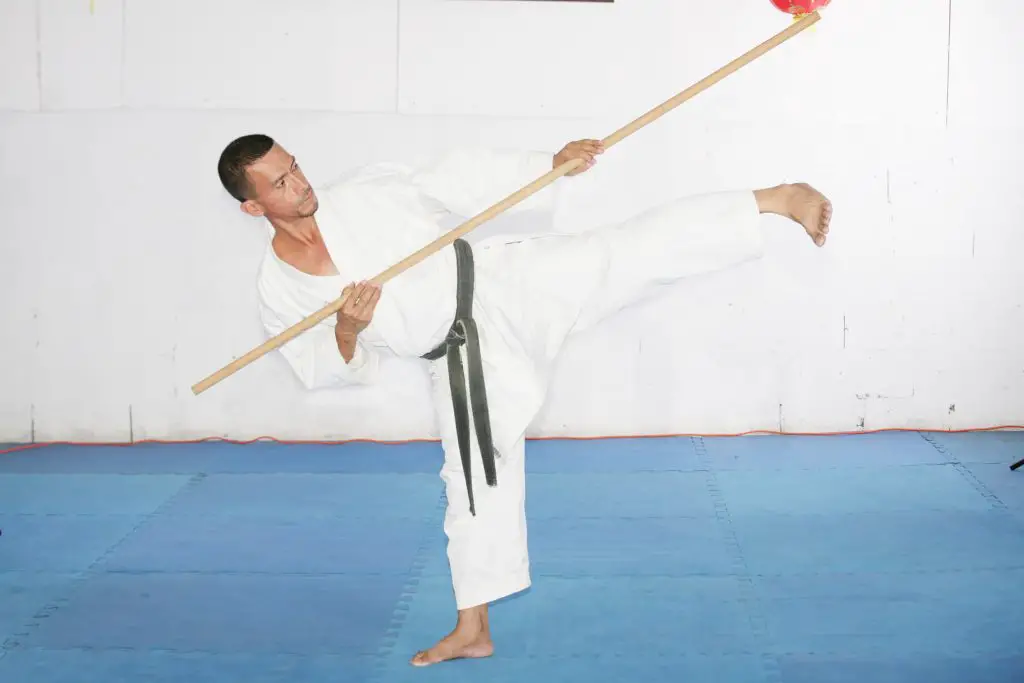
Focusing on Self-Defense
Karate weapon training revolves around SELF-DEFENSE, not aggression. The key is to understand the distinction between offensive and defensive techniques. By focusing on defensive tactics, you’ll develop practical skills to PROTECT yourself and others in real-life situations.
Developing Hand-to-Eye Coordination
HAND-TO-EYE COORDINATION is vital for effective weapon use. This skill helps you anticipate your opponent’s moves and respond ACCURATELY. Practicing this coordination through repetitive exercises enables you to wield your chosen weapon with CONFIDENCE.
Training with Foam Nunchaku
Using foam nunchaku is the way to go to safely train and improve your skills. Foam nunchaku allows you to experiment and perfect your techniques while focusing on discipline.
Notable Figures and Karate Weapons
Bruce Lee and Nunchaku
BRUCE LEE, a legendary martial artist, popularized the use of NUNCHAKU in his films.
This SELF-DEFENSE WEAPON showcases his incredible agility and coordination. It has TWO connected sticks and requires great skill to master.
- Learn the Nunchaku as a powerful martial arts weapon
- Channel your inner Bruce Lee with practice and dedication
The Samurai and the Katana
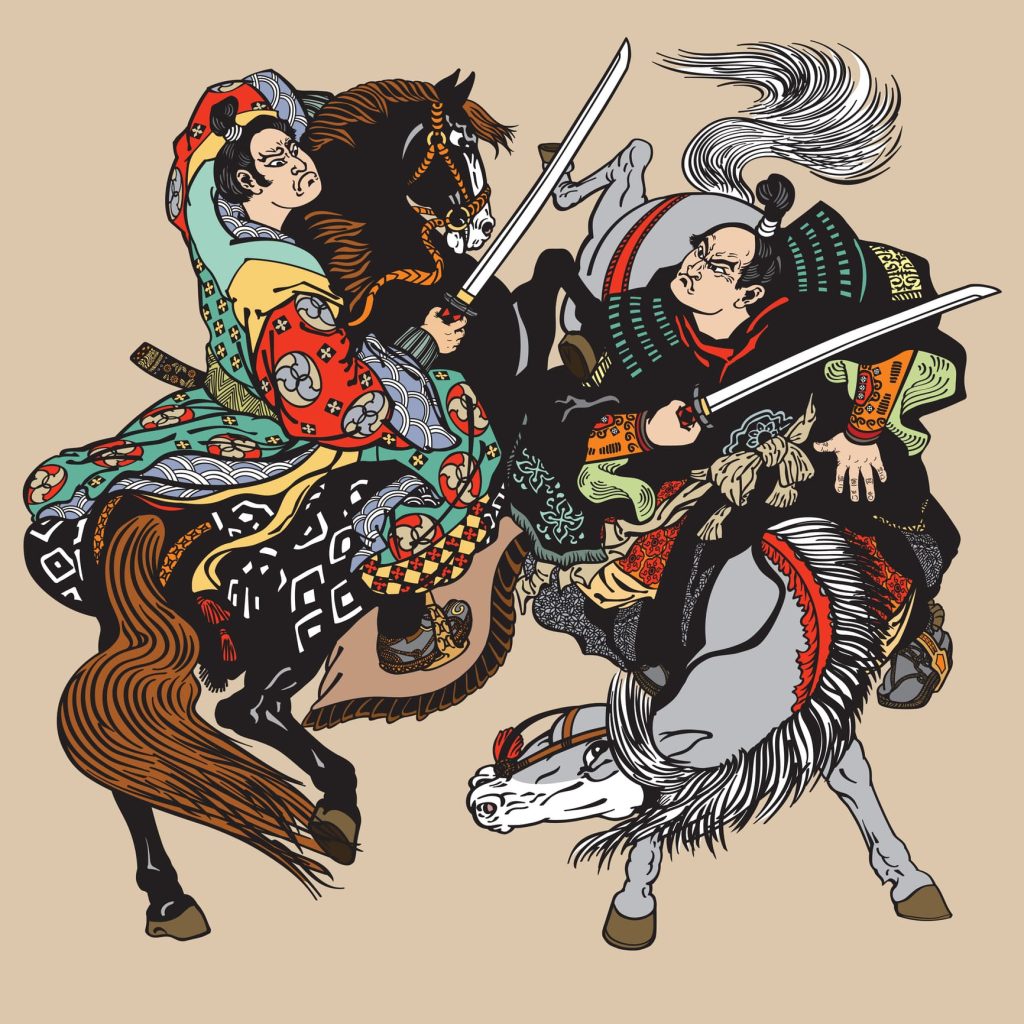
The SAMURAI warriors of Japan were known for their mastery of the KATANA. This razor-sharp sword became an emblem of their culture and status. The katana is renowned for its:
- Single-edged, curved blade
- Unrivaled cutting ability
- Strong symbolism in martial arts
Incorporate the graceful techniques of the samurai in your training to COMMAND the katana.
The Role of the Satsuma Clan
The SATSUMA CLAN played a crucial part in the development of Karate weapons. They invaded Okinawa in the 17th century, prohibiting using weapons and martial arts. The ban led to:
- Creation of new MARTIAL ARTS WEAPONS
- Adaptation of everyday tools into self-defense weapons
Despite their oppressive actions, the Satsuma Clan inadvertently helped to shape the rich tradition of Karate weapons. Embrace this history and incorporate it into your martial arts journey.
Karate Weapons in Modern Martial Arts
Welcome to the world of Karate Weapons! Get ready to explore their modern applications and influence in martial arts.
Use of Tambo and Jo
Tambo and Jo are versatile weapons deriving from Okinawan martial arts. These short and medium-length staves are often used for sweeping and long-range attacks. They allow you to control an opponent’s movement effectively and create openings for further techniques.
The Three-Section Staff: Sansetsukon
The Sansetsukon, or three-section staff, is another popular Karate weapon. Its flexible design provides a wide range of motion, enabling you to execute powerful strikes and blocks.
The Sansetsukon’s extended reach makes it an excellent weapon for long-distance fights.
From Hanbo to Police Baton
Moving from traditional to modern application, the Hanbo, a short wooden staff, has influenced the design of police batons.
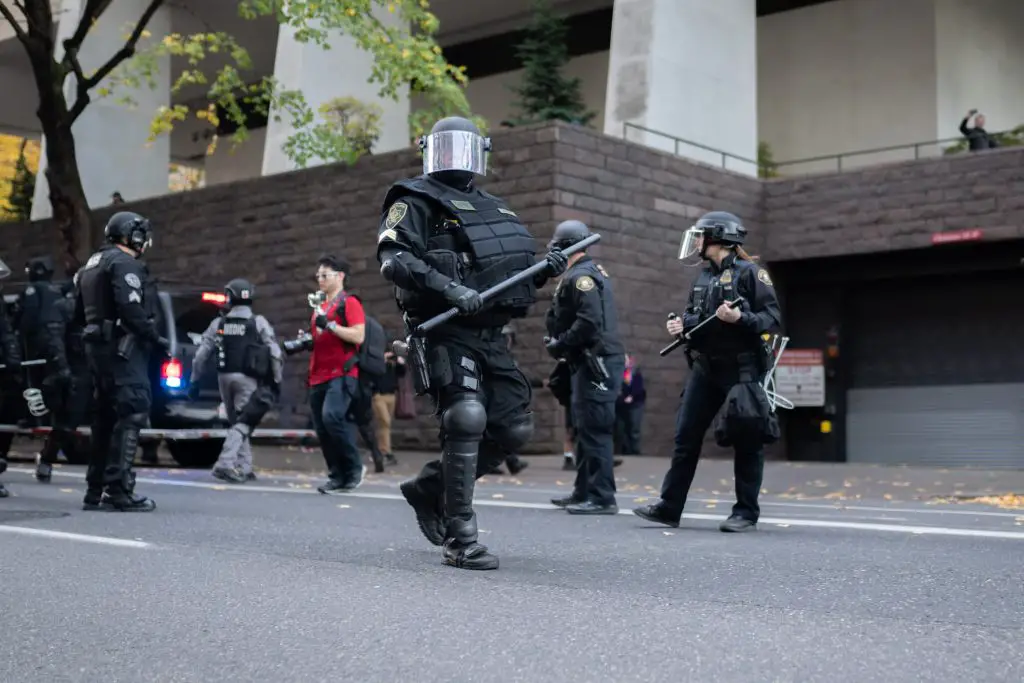
With its versatile use in self-defense and law enforcement, the Hanbo showcases the practicality of Karate weapons in contemporary scenarios.
Influence on Kung Fu and Ninjas
Karate weapons have had a significant impact on other martial arts styles. For instance, Kung Fu practitioners have incorporated the Nunti Bo, a variant of the spear, into their training.
Meanwhile, ninjas have adapted weapons like the Sai for their own unique purposes, further spreading the influence of Karate weaponry.
In summary, modern martial arts continue to evolve, and the impact of Karate weapons can be seen across a variety of practices and applications. Embrace the power and versatility of these traditional tools as you enhance your martial arts journey.
Purchasing and Caring for Karate Weapons
Your journey in mastering karate weapons means choosing the right gear, maintaining its quality, and practicing safety. This section covers essential tips to help you excel in these areas.
Choosing the Right Gear
When buying Karate weapons, quality and durability are key factors to consider. Research reputable manufacturers and read reviews for traditional weapons like sai and katana.
Consult your training team for recommendations. Remember, investing in quality gear increases reliability and enhances performance.
Maintaining Hardwood Weapons
To keep your hardwood weapons in top condition, clean them regularly with a dry cloth to remove sweat and dust. Avoid exposing them to extreme temperatures as this may cause warping or cracking.
Oiling them occasionally maintains their smooth surface and prevents splitting. Proper care prolongs the lifespan and functionality of your weapons.
Safety Measures for Throwing Weapons
Throwing weapons like kunai requires extra caution. Always practice in a secure environment, free of bystanders. Use protective gear, such as gloves and goggles, to reduce the risk of injury.
If your techniques involve increased range, ensure there is ample space. Remember, proper usage and attention to safety minimize accidents and demonstrate responsibility.
Points to Respect While Handling Lethal Weapons
Handling lethal karate weapons, like the katana or Kama, demands serious respect and discipline. Follow your instructor’s guidelines, and never use these weapons inappropriately.
When transporting or storing weapons, use cases or containers to protect them and prevent accidents. Educate others on proper weapon etiquette, contributing to a safe training environment.
Stay committed to caring for, handling, and mastering your Karate weapons. Use these tips to elevate your skills and become your best martial artist.
Frequently Asked Questions
What are the common traditional weapons in Karate?
Karate, a Japanese martial art, deeply connects with traditional weapons. The most common ones include the Bo, Hanbo, Tambo, Nunchaku, and Tonfa.
How is Kamas used in Karate?
Kamas are unique weapons used in Karate. With curved blades and wooden handles, they are designed for precision strikes. In Karate, Kamas are employed for cutting, blocking, and trapping your opponent’s weapon.
What is the role of Nunchaku in Karate training?
Nunchaku plays a vital role in Karate training. These consist of two sticks connected by a chain or rope. You develop hand-eye coordination, dexterity, and reflexes when practicing with Nunchaku. They also serve as effective striking or trapping weapons.
Which weapons are specific to Okinawan Karate?
Okinawan Karate is known for its unique weapons. These include the Sai, Eku, Tekko, and Nunti Bo. These weapons are often utilized in Okinawan-specific katas and techniques.
Are there any weapon-based Katas in Karate?
Indeed, there are weapon-based katas in Karate. When practicing with weapons, you learn form, structure, and application. These katas differ based on the weapon used and the specific style of Karate.
What is the purpose of the Tonfa in Karate?
The Tonfa is a multifaceted weapon in Karate. It has a unique shape with a perpendicular handle. This design allows for striking, blocking, and defensive maneuvering. Tonfa’s versatility makes it a powerful training tool, improving grip strength and hand speed.
